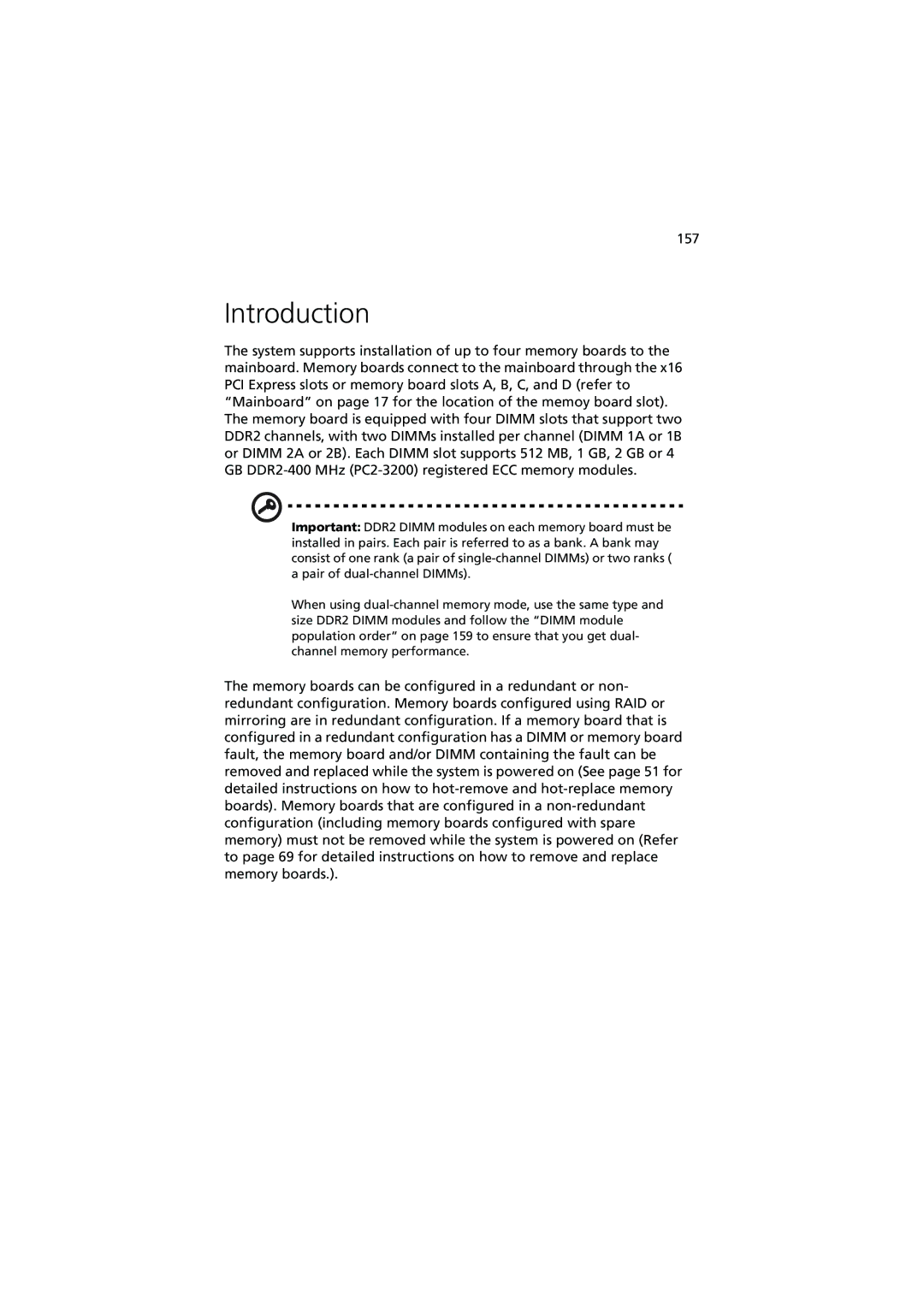157
Introduction
The system supports installation of up to four memory boards to the mainboard. Memory boards connect to the mainboard through the x16 PCI Express slots or memory board slots A, B, C, and D (refer to “Mainboard” on page 17 for the location of the memoy board slot). The memory board is equipped with four DIMM slots that support two DDR2 channels, with two DIMMs installed per channel (DIMM 1A or 1B or DIMM 2A or 2B). Each DIMM slot supports 512 MB, 1 GB, 2 GB or 4 GB
Important: DDR2 DIMM modules on each memory board must be installed in pairs. Each pair is referred to as a bank. A bank may consist of one rank (a pair of
When using
The memory boards can be configured in a redundant or non- redundant configuration. Memory boards configured using RAID or mirroring are in redundant configuration. If a memory board that is configured in a redundant configuration has a DIMM or memory board fault, the memory board and/or DIMM containing the fault can be removed and replaced while the system is powered on (See page 51 for detailed instructions on how to
